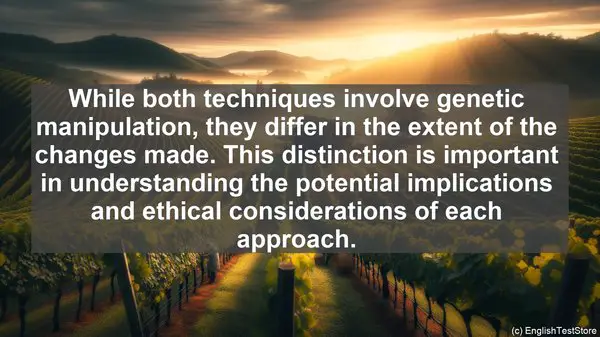Introduction
Today, we’re going to dive into the fascinating world of gene editing. While it’s an exciting field, it’s also filled with terminology that can be confusing. In this lesson, we’ll be focusing on the top 10 words that often trip up students. So, let’s get started!
1. Gene vs. Allele
Gene and allele are two terms that are often used interchangeably, but they have distinct meanings. A gene is a segment of DNA that codes for a specific trait, while an allele is a variant of that gene. Think of it this way: a gene is like a recipe, and an allele is a specific ingredient used in that recipe. Understanding this difference is crucial in comprehending genetic inheritance patterns.
2. Homozygous vs. Heterozygous
Homozygous and heterozygous refer to the presence of the same or different alleles, respectively, at a specific gene locus. For example, if an organism has two identical alleles for a gene, it’s homozygous. On the other hand, if it has two different alleles, it’s heterozygous. This distinction is vital in understanding how traits are expressed and passed on.

3. Knockout vs. Knockdown
When it comes to gene editing, these two terms often come up. Knockout refers to completely eliminating the function of a gene, while knockdown means reducing its activity. It’s like turning off a light switch versus dimming it. Both techniques have their uses, and understanding their differences is essential in designing experiments.
4. CRISPR vs. TALEN
CRISPR and TALEN are two popular gene editing tools. CRISPR, short for Clustered Regularly Interspaced Short Palindromic Repeats, is a versatile and relatively easy-to-use technique. TALEN, which stands for Transcription Activator-Like Effector Nucleases, is another method that can be used for precise gene editing. Each tool has its advantages and limitations, so researchers often choose based on their specific needs.
5. In Vivo vs. In Vitro
In vivo and in vitro are Latin terms commonly used in scientific research. In vivo refers to experiments conducted within a living organism, while in vitro means the experiment is performed outside of a living organism, usually in a lab setting. Understanding these terms is crucial in interpreting research findings and understanding the context in which they were obtained.
6. Germline vs. Somatic
Germline and somatic cells are two types of cells in an organism. Germline cells are involved in reproduction and can pass on genetic information to the next generation. Somatic cells, on the other hand, make up the body and are not involved in reproduction. When it comes to gene editing, distinguishing between these two cell types is important, as changes in germline cells can be heritable.
7. Off-Target Effects
Off-target effects are unintended changes that can occur during gene editing. While gene editing techniques are becoming more precise, there’s always a risk of these off-target effects. Researchers employ various strategies to minimize these effects, but it’s an ongoing challenge in the field. Understanding this concept is crucial in evaluating the reliability of gene editing experiments.
8. Transgenic vs. Gene-Edited Organisms
Transgenic organisms are those that have had genes from another species inserted into their genome. Gene-edited organisms, on the other hand, have specific genes modified or altered. While both techniques involve genetic manipulation, they differ in the extent of the changes made. This distinction is important in understanding the potential implications and ethical considerations of each approach.

9. Base Editing vs. Gene Insertion
Base editing and gene insertion are two strategies used in gene editing. Base editing involves making precise changes to individual DNA bases, while gene insertion refers to adding an entire gene or DNA sequence. Each technique has its applications, and understanding their differences is crucial in selecting the appropriate method for a specific purpose.
10. Ethical Considerations
Finally, gene editing raises important ethical considerations. While the technology holds immense promise, there are concerns about its potential misuse or unintended consequences. As budding scientists, it’s essential to engage in thoughtful discussions about these ethical implications and consider the broader societal impact of our research.
